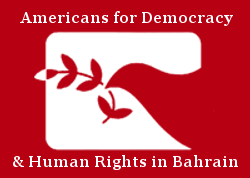Last week, almost 2 million people traveled to Saudi Arabia to complete the Hajj, the annual pilgrimage to Mecca that every capable Muslim must carry out at least once in their lives. Despite its scheduled occurrence, the sudden influx of pilgrims poses numerous safety and security risks. The United Nations Human Rights Council (UNHRC), during its 2013 Universal Periodic Review (UPR) of Saudi Arabia, included recommendations for the government to improve its administration of the Hajj. Saudi officials accepted these recommendations and have taken some steps to implement them. However, the Saudi government still prioritizes profit from the Hajj over the safety of pilgrims and conservation of heritage sites. The devastating incidents from 2015 emphasize the need for Saudi Arabia to shift its priorities and further improve its Hajj procedures, infrastructure, and delegation of authority.
On 11 September 2015, ten days before the start of that year’s Hajj, a crane crashed through the ceiling of the Mecca Grand Mosque as Friday prayers were being held. The accident killed 107 people and an additional 200 were wounded. Saudi authorities quickly placed the blame on the Saudi Bin Laden Group, the company overseeing the Grand Mosque’s expansion, and suspended it from undertaking any future projects. Charges followed, with officials singling out engineers, project managers, and government employees.
Less than two weeks later, on the third day of the Hajj, thousands of pilgrims were trampled to death in a stampede near the Jamarat Bridge. Witnesses claim that prior to the incident, Saudi officials barricaded entry and exit routes between the different ritual areas and security forces were not allowed to alter the barrier in response to changing traffic. This created the bottleneck that precipitated the stampede.
Following the tragedy, there was no designated area for family members and friends to get information about their loved ones. Many countries were forced to wait before they gained access to their injured citizens. In contrast to the quick response after the crane collapse, Saudi officials have still not released any findings from the investigation into the catastrophe or held a party responsible. Worse, official Saudi estimates downplay the death toll at 769. A count by The Associated Press found that at least 2,400 people died in the tragedy.
This year, in response to these tragedies and the resulting criticism, the Saudi government implemented measures that it claims improve safety. Saudi authorities provided new electronic bracelets to pilgrims as they undertook hajj. Each GPS-enabled bracelet contains the pilgrim’s passport number, address, and medical information, which authorities say will allow them to administer better assistance. The bracelets inform pilgrims about when prayers will occur and where to find a multi-lingual help desk. Additionally, Saudi officials deployed drones to monitor worshipers and placed thousands of new cameras in the Grand Mosque. All of these new surveillance methods will feed into a network that can be accessed by security forces through their smartphones, with the hopes that they will be able to identify any potential issues and respond quickly. These measures appear to represent genuine efforts to improve Hajj security, but they may also jeopardize pilgrims’ right to privacy.
Despite its poor record in ensuring pilgrim safety, the Saudi government puts tremendous effort into maximizing profits from the Hajj. Pilgrims spend approximately $18 billion in Saudi Arabia during the Hajj and in recent years Saudi developers dramatically increased the cost of the Hajj, through the construction of expensive hotels, shopping malls, and restaurants. Now many middle-class pilgrims are struggling to afford lodging, as affordable accommodations are pushed to the outskirts.
In addition, the explosive development in Mecca gives the Saudi government new license to continue the demolition of Islamic heritage sites. For example, in constructing the $3.5 billion Abraj Kudai hotel, the Saudi government demolished the house of the prophet’s wife, Khadijah, and a fortress dating back to the Ottoman Empire. Unfortunately, this destruction is only one example of the Saudi government’s longstanding policy of destroying religious sites to facilitate economic gain.
Though the 2016 Hajj has passed, Americans for Democracy and Human Rights in Bahrain (ADHRB) reiterates the statements outlined in the UPR and urges Saudi Arabia to implement recommendations to its Hajj policies that will guarantee pilgrim safety. ADHRB also calls for an end to Saudi destruction of religious and historically significant sites in the kingdom. As the self-proclaimed guardian of the holy sites and facilitators of the Hajj, Saudi Arabia must live up to its responsibilities to ensure that it provides adequate protection and respect for each participant, as well as maintain the historical integrity of its invaluable heritage sites.
Danielle Lilly is an Advocacy Intern at ADHRB.




